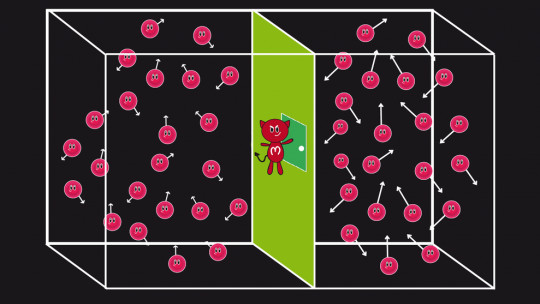The social sciences are a broad and diverse field of study that examines human behavior, societies, cultures, and interactions. Unlike the natural sciences, which focus on the physical world, social sciences aim to understand social structures, institutions, and relationships. These disciplines help us analyze historical trends, economic systems, political structures, psychological behaviors, and cultural norms, shaping our understanding of human society.
In this article, we explore the 12 main branches of social sciences, their key characteristics, and their importance in understanding human behavior and societies.
The social sciences are a set of academic disciplines that study human aspects related to individual behavior and the functions and elements of social organization. The above is divided into many work specialties, professional profiles that are responsible for analyzing and describing the different social processes, as well as their impact on people.
In other words, this joint research effort focuses on studying social phenomena and their evolution, starting from the idea that human experience cannot be understood by focusing solely on the behavior of individuals as entities separate from each other. others. As the immense network of interactions in which we live Homo sapiens It cannot be covered by a single type of scientist, it is necessary that there are branches of social sciences that observe, analyze and predict various of its aspects and facets.
Unlike formal sciences, such as mathematics, logic or physics, social sciences study living systems. At the same time, differ from the natural sciences (which also study living systems), while the social sciences study these systems based on the complexity of behavior and its effects in social terms, and furthermore, what they study is constantly changing as societies evolve, while In the former, the object of study tends to be maintained over time (each of the types of atoms, molecules, and biological species always remain the same, or if they change, they do so on a time scale of thousands of years).
Furthermore, the research activity itself in this area so linked to cultural, demographic, political and economic dynamics causes what is studied to change. Thus, dedicating oneself to any of the branches of social sciences implies accepting that the very fact of investigating societies causes them to change and stop being as the scientist who has been observing them knew them.
Leaving aside the natural sciences, the social sciences are more related to the human sciences (the humanities), because both study a large part of subjectivity and collectivity.
However, the social sciences and humanities are different in that the former emphasize the use of scientific methods, while the humanities use more artistic and aesthetic methods of analysis.
In terms of science, “the social” formally appeared until the 19th century, when its disciplines were consolidated as fields of research with their own and differentiated objects of study. Initially, the term “social science” was used to group studies on culture and society so anthropology and sociology were two of the pioneers among all the branches of the social sciences that we know today.
However, its antecedents can be traced back even centuries, in the curiosity we have to understand what makes us human beings, the nature of our behaviors, our relationship with the environment, how we organize socially, etc.
The social sciences can be divided into different disciplines, which varies depending on the intention of those who define and use them. For example, according to the specific social science tradition, one of these disciplines can be considered a social science, or a human science, or even a natural science.
Likewise, and according to the needs of each context, there may be more or fewer disciplines within the social sciences. This is the case, for example, of the limits that exist between some subdisciplines within medicine (such as social medicine), sociobiology, neuropsychology or philosophy itself.
However, in very broad terms we can divide the social sciences into 10 fundamental disciplines: anthropology, sociology, geography, history, law, political science, economics, communication, pedagogy and psychology.
1. Anthropology
Anthropology explores human beings from both biological and cultural perspectives. It seeks to understand how cultures develop, evolve, and interact over time.
Key Areas in Anthropology
- Cultural anthropology (traditions, customs, and beliefs)
- Archaeology (study of past societies through material remains)
- Physical anthropology (human evolution and genetics)
- Linguistic anthropology (languages and their role in culture)
Importance
Anthropology provides insights into human diversity, evolution, and how cultures shape behavior and societal development.
Anthropology is the study of human societies, cultures, and behavior, past and present. It encompasses cultural anthropology, which examines the customs, beliefs, and practices of different cultures, as well as physical anthropology, which focuses on the biological and evolutionary aspects of human beings.
Anthropology is the discipline that studies the social behavior of human beings in relation to their physical characteristics and the cultural elements in which they are part. This implies the forms and norms that culture takes in different societies both in the past and in the present.
It is a holistic discipline because it integrates different knowledge from various branches of social sciences and natural sciences. It can be subdivided into different branches, such as physical anthropology, cultural anthropology, linguistic anthropology, or archaeology.
2. Sociology
Sociology focuses on understanding social structures, human interactions, and cultural norms. Sociologists analyze topics such as social inequality, family dynamics, crime, education, and group behavior.
Key Areas in Sociology
- Social institutions (family, religion, education)
- Social class and inequality
- Urbanization and migration
- Deviance and crime
Importance
Sociology helps us understand how societies function, how individuals interact within them, and how social problems arise and evolve. It examines social phenomena such as socialization, stratification, inequality, and social change, using both qualitative and quantitative methods to understand patterns of human behavior and interaction.
Sociology is responsible for studying human social relations and their institutions. This implies that its objects of study are very diverse. They can range, for example, from religion to the family, through social class divisions or racial divisions and the organization of states, among many others. It seeks to understand both social stability and the processes of change and transformation.
At the individual level, sociology allows us to understand the consequences of social phenomena on people (for example, gender identities, religious faith, family institutions). And at a global level, sociology can help us understand phenomena such as migration, population growth, wars, economic development, among others. In addition, sociology also studies how the emergence of certain social constructs gives rise to new phenomena that are based, at least in part, on consensus. For example, gender roles are not “natural” but are social constructs, but they are very resistant to change and where they exist, they greatly influence people’s lives.
3. Geography
Geography examines the Earth’s surface, its physical features, and how humans interact with their environment. It is divided into:
Key Areas in Geography
- Physical geography (landforms, climate, ecosystems)
- Human geography (population, migration, urbanization)
- Political geography (borders, geopolitics, territorial disputes)
- Environmental geography (human impact on nature, sustainability)
Importance
Geography helps in urban planning, environmental conservation, and climate change analysis, shaping how societies interact with the physical world.
Geography explores the spatial distribution, patterns, and interactions of human and physical phenomena on Earth’s surface. It encompasses both physical geography, which studies natural landscapes and processes, and human geography, which examines the spatial organization of human activities, cultures, and environments.
Geography is the social science that is responsible for studying the different environments and spaces that make up the Earth’s surface, as well as the interactions that occur between and within them. It is responsible for describing the main characteristics of the places where our life takes place, especially paying attention to natural environments and how we relate to them.
As a result of this discipline, for example, maps have emerged, which among other things allow us to understand where the places where we are are and what they are like based on graphic descriptions of the earth.
4. History
History investigates past events, societies, and cultures to understand human development and social changes over time. Historians rely on written records, artifacts, and oral traditions to reconstruct the past.
Key Areas in History
- Ancient history (civilizations like Egypt, Rome, and Greece)
- Modern history (world wars, industrial revolutions, contemporary politics)
- Social history (daily life, culture, and traditions)
- Economic history (trade, industrialization, and financial crises)
Importance
History helps us learn from past mistakes, understand societal evolution, and shape the future by analyzing historical patterns and developments.
History is the study of past events, societies, and cultures, providing insights into the development, evolution, and interactions of human civilizations over time. It explores historical processes, events, and individuals, analyzing their impact on contemporary society and shaping collective memory and identity.
History is the discipline that is responsible for studying, describe and represent events from the past, generally recorded in written documents, although not necessarily. While “the past” is a fairly broad category, history can be divided in many ways.
This division begins with defining when we went from prehistory to history. From this, you can study the different periods that have characterized different societies. There is, for example, medieval, modern or contemporary history; but also history of religion, history of art, universal history, among many others.
5. Legal sciences and law
Law examines the rules, regulations, and legal systems that govern societies. It defines the rights and responsibilities of individuals and institutions.
Key Areas in Law
- Criminal law (crimes and punishments)
- Civil law (contracts, property, family law)
- International law (relations between nations)
- Constitutional law (legal frameworks of governments)
Importance
Law ensures justice, social order, and human rights, influencing legal policies and governance.
Law as a specialty within the social sciences is responsible for studying all institutions, their systems of rules and authority related to legality. On many occasions, law is separated from the social sciences and is understood as its own school, however, this area of study is based on the idea that laws and legality are social institutions in themselves, and that is why it is usually considered a branch of social science.
In this sense, the right It draws on human sciences such as philosophy, but also on politics, economics, sociology or history. The intention is to understand and generate institutional normative orders that impact human behavior and social relationships.
6. Political science
Political science examines systems of government, political ideologies, public policies, and international relations. It seeks to understand how power is distributed and exercised in societies.
Key Areas in Political Science
- Comparative politics (analysis of different political systems)
- International relations (global politics and diplomacy)
- Political theory (philosophical foundations of politics)
- Public administration (government policies and management)
Importance
Political science helps in understanding democracy, governance, and policymaking, shaping national and international relations.
Political science focuses on the study of political systems, institutions, behavior, and power dynamics within societies. It examines governance, public policy, political ideologies, international relations, and political participation, seeking to understand the mechanisms and consequences of political decision-making.
Political science is the discipline that studies, describes and analyzes political theories and practices, systems and behaviors. Seeks to understand transfers of power in political decision processes and how these transfers are organized publicly and socially.
In addition to political theory, some subdisciplines that make up this social science are the theories of democracy and governance, the study of national systems, public and administrative policy, international law, among others.
At a methodological level, political science carries out, for example, analysis of primary sources such as written historical documents or interviews; and secondary sources such as scientific articles, among other empirical collection methods.
7. Economy
Economics studies how societies produce, distribute, and consume goods and services. It is divided into two main branches:
Key Areas in Economics
- Microeconomics (individual and business economic decisions)
- Macroeconomics (national and global economic systems)
- Behavioral economics (how psychological factors influence economic choices)
- Development economics (economic growth in developing nations)
Importance
Economics helps in understanding financial markets, trade, inflation, employment, and resource distribution, influencing public policies and business strategies.
Economics examines the production, distribution, and consumption of goods and services within societies. It analyzes economic systems, markets, and policies, exploring topics such as scarcity, resource allocation, pricing, and economic behavior at the individual, household, and societal levels.
No matter how much we tend to associate the social sciences with studies that ignore numbers, that is still a mirage. A clear example of this is the existence of economics as a scientific discipline.
Economics studies, analyzes and describes the processes of production, distribution and consumption of goods and services. It seeks to understand what means we have generated to satisfy our needs and how that impacts us both individually and socially. While economic activity is very diverse, economics as a social science can be subdivided into different areas. For example, there are studies in public economics, labor economics, international economics development economics, among many others.
Economics has several levels of analysis, and if we look at the scale of the processes it investigates, we can distinguish between macroeconomics and microeconomics. The first focuses on global economic dynamics, while the second focuses on the behavior and decision-making of individual entities, whether people or organizations.
8. Criminology
Criminology focuses on the causes, consequences, and prevention of crime, examining criminal behavior and justice systems.
Key Areas in Criminology
- Theories of crime (biological, psychological, and sociological perspectives)
- Criminal justice systems (law enforcement, courts, corrections)
- Crime prevention strategies
- White-collar and cybercrime studies
Importance
Criminology helps in crime prevention, legal reforms, and understanding criminal psychology, contributing to safer societies.
9. Pedagogy
Education focuses on the process of teaching and learning, as well as the institutions, policies, and practices that shape educational systems. It explores pedagogy, curriculum development, educational psychology, and the social and cultural contexts of learning.
Pedagogy is a discipline that studies the teaching-learning processes that occur in different environments, especially within schools, as they are the institutions where education is developed and transmitted. Education has been positioned as one of the fundamental aspects of culture because it allows socialization and the transmission of knowledge from one generation to another.
In this sense, pedagogy is the science that studies educational processes and also applies them through different tools that it shares, for example, with psychology, sociology, communication, among others.
10. Psychology
Psychology studies human thoughts, emotions, and behaviors. It seeks to understand how people think, feel, and act in various situations.
Key Areas in Psychology
- Cognitive psychology (thought processes and perception)
- Clinical psychology (mental health and therapy)
- Social psychology (how individuals behave in groups)
- Developmental psychology (human growth and development)
Importance
Psychology helps in mental health treatment, education, marketing, and organizational behavior, improving overall human well-being.
Psychology is the scientific study of the mind, behavior, and mental processes. It encompasses various subfields, including clinical psychology, developmental psychology, cognitive psychology, and social psychology, which explore different aspects of human cognition, emotion, personality, and behavior.
Psychology is the discipline that studies human or animal behavior and mental processes. It differs from other social sciences, such as anthropology, in that it seeks to develop generalized explanations about mental functions and individual or group behaviors, and not so much about cultural or historical processes.
However, it is closely related to other human and social disciplines, since to develop explanations about individual functioning, it has been necessary to take into account how we develop in relation to others. Thus, different sub-branches have emerged, some of the main ones being clinical psychology, social psychology, educational psychology, organizational psychology or neuropsychology.
On the other hand, psychology collaborates widely with almost all other social sciences, even those that study the social behavior of animals, such as ethology.
Examples of psychologists who have been very relevant are Daniel Kahneman, Elizabeth Loftus, Burrhus Frederic Skinner and Albert Bandura.
11. Demographics
Demography analyzes population trends, birth rates, death rates, and migration patterns. It provides insights into social, economic, and political changes.
Key Areas in Demography
- Population growth and decline
- Migration and urbanization
- Aging populations
- Fertility and mortality rates
Importance
Demography helps in policy planning, economic forecasting, and social development, influencing public policies on health, housing, and education.
The demographics are the branch of Social Sciences in charge of studying the characteristics and evolution of human populations based on the tools of statistics through criteria such as population density, the dimensions of population groups, their basic structure, their development over time and the implications regarding the possibilities of formation, conservation or disappearance of these groups.
Some of the most important aspects that are addressed from demographics are birth rate, fertility, mortality, and migration processes, and variables such as the sex of the members of a population, blood groups, ethnicities, are taken into account. , certain genetic markers, etc. Thus, although demography is part of the Social Sciences, there are aspects of its concern that are also studied from medicine or even biology, although they are relevant when establishing policies or predicting the possible problems of a society.
Within this science, it is worth highlighting examples of important demographers such as Thomas Malthus, John Graunt and Adolphe Quetelet, among others.
12. Linguistics
Linguistics is the study of human language, including its structure, evolution, and role in communication.
Key Areas in Linguistics
- Phonetics (sounds of language)
- Syntax (sentence structure)
- Semantics (meaning of words and phrases)
- Sociolinguistics (language and social interactions)
Importance
Linguistics helps in language learning, artificial intelligence, translation, and preserving endangered languages.
Linguistics is the scientific study of language, including its structure, development, and use in communication. It examines the phonetics, syntax, semantics, and sociolinguistic aspects of language, exploring how language shapes thought, identity, and social interaction.
As its name indicates, linguistics is the scientific study of the origin, development, dispersion and structure of language in its different forms. For this reason, this discipline is closely linked to areas of study such as sociology and anthropology (which study the birth of dialects and languages, and their interaction with other language variants and linguistic communities), and also to the sciences of communication (which focus rather on the content of what is said).
Linguistics researchers also observe and analyze the way in which grammar and the rules applied to the use of language emerge, and they often use elements provided by historians and archaeologists to understand its evolution on a larger time scale. They are also interested in phonetics, linked to the spoken use of language, and in elements of the lexical level of language (that is, its qualities linked to meaning), through sub-disciplines such as phraseology or lexicology.
Some of the main representatives of linguistics are Noam Chomsky, Franz Bopp, Rodolfo Cerrón Palomino or Ferdinand de Saussure.
If what worries you when thinking about job opportunities in each category of social sciences is whether you will have a choice, the good news is that this field of work is characterized by being incredibly diverse that is to say, each of the branches of social sciences has many branches and areas of specialization, some of which are very “niche.” This is because in the same way that societies and cultures are diverse and tend to be somewhat homogeneous, there are always particularities and novel aspects that have not yet been studied in depth. On the other hand, fortunately, anyone dedicated to this type of study has a lot to learn and research on their own, so we must not forget that the vocation factor is very important.
Now, if by “having professional opportunities in the social sciences” you mean have the ability to carry out paid work, things change. The ability to find well-paid work when dedicating ourselves to one of the social sciences depends on each country or region; Due to the way the labor market works, there are no fixed rules about what type of research activity gives the most money or stability. However, as a general rule it is worth taking these criteria into account.
The 12 branches of social sciences offer diverse perspectives and methodologies for understanding human society, behavior, and interactions. By exploring these disciplines, researchers, practitioners, and policymakers can gain valuable insights into the complexities of social life and contribute to the advancement of knowledge and the improvement of society.
FAQs on Social Sciences
Social sciences help us understand human behavior, cultures, economies, and political systems, improving decision-making in various fields like government, business, and education.
Natural sciences study the physical world (biology, physics, chemistry), while social sciences study human societies and interactions.
While not as precise as natural sciences, social sciences use data analysis, theories, and case studies to predict patterns in human behavior and societal trends.
Careers include sociology, psychology, politics, economics, law, education, research, and urban planning.













